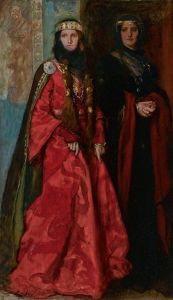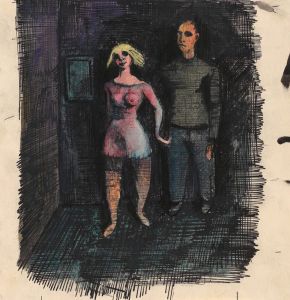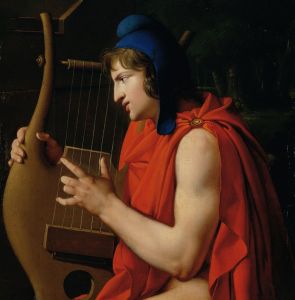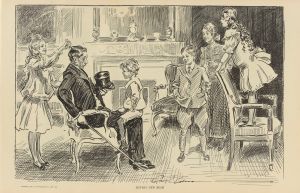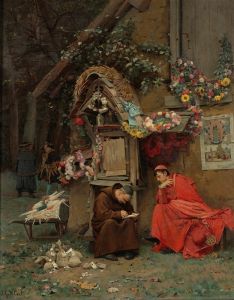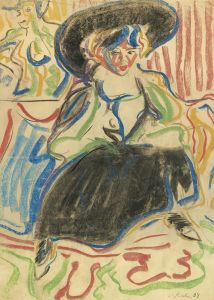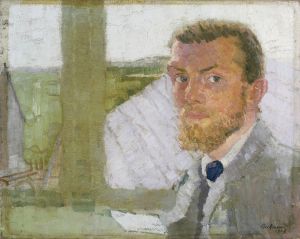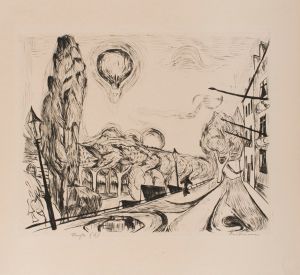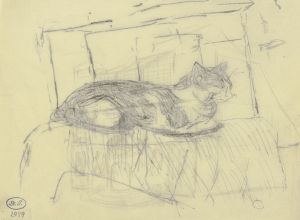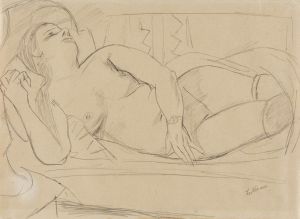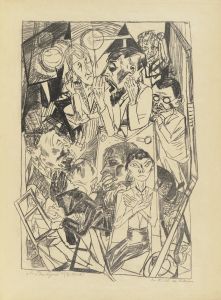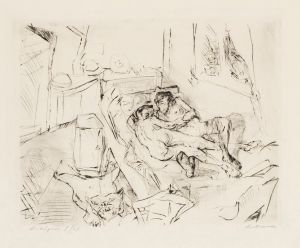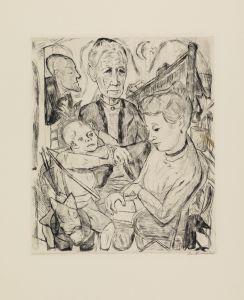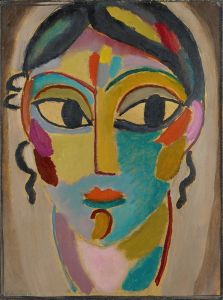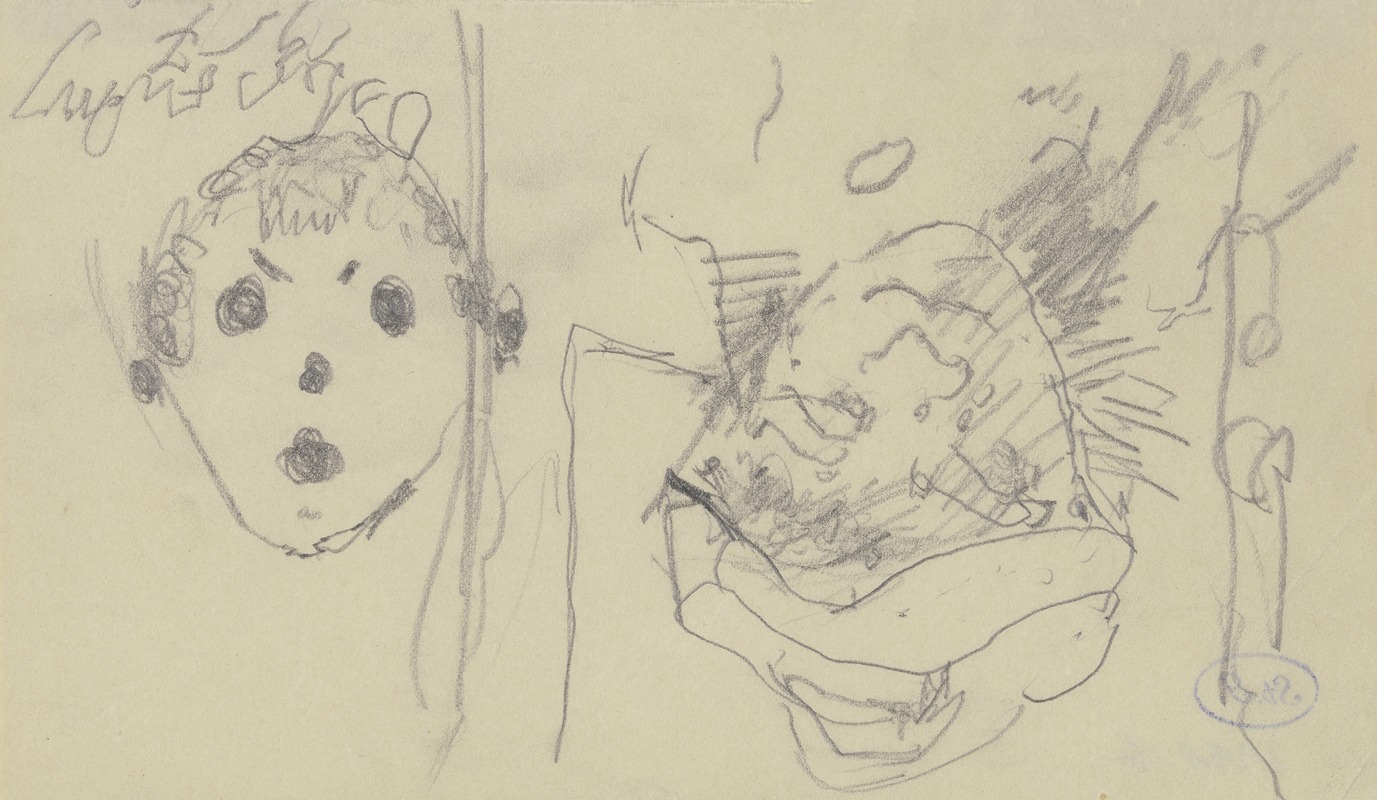
Kopf einer Frau mit Hut sowie eine – bei Drehung des Papiers um 180 Grad gezeichnete – schematische Fratze
A hand-painted replica of Max Beckmann’s masterpiece Kopf einer Frau mit Hut sowie eine – bei Drehung des Papiers um 180 Grad gezeichnete – schematische Fratze, meticulously crafted by professional artists to capture the true essence of the original. Each piece is created with museum-quality canvas and rare mineral pigments, carefully painted by experienced artists with delicate brushstrokes and rich, layered colors to perfectly recreate the texture of the original artwork. Unlike machine-printed reproductions, this hand-painted version brings the painting to life, infused with the artist’s emotions and skill in every stroke. Whether for personal collection or home decoration, it instantly elevates the artistic atmosphere of any space.
Max Beckmann, a prominent German painter and printmaker, is known for his distinctive style that combines elements of Expressionism and New Objectivity. One of his intriguing works is "Kopf einer Frau mit Hut sowie eine – bei Drehung des Papiers um 180 Grad gezeichnete – schematische Fratze," which translates to "Head of a Woman with Hat and a Schematic Grotesque Face Drawn by Rotating the Paper 180 Degrees." This artwork exemplifies Beckmann's innovative approach to portraiture and his interest in duality and transformation.
Created in 1923, this piece reflects the post-World War I era's complex social and cultural dynamics. Beckmann, who had served as a medical orderly during the war, was deeply affected by the conflict and its aftermath. His experiences influenced his artistic vision, leading him to explore themes of identity, human nature, and the grotesque.
The artwork features a dual image: a woman's head wearing a hat and, when the paper is rotated 180 degrees, a schematic grotesque face. This duality is a hallmark of Beckmann's work, where he often juxtaposed contrasting elements to challenge the viewer's perception. The woman's head is rendered with Beckmann's characteristic bold lines and strong forms, capturing a sense of individuality and introspection. In contrast, the grotesque face, revealed upon rotation, introduces an element of surprise and complexity, inviting viewers to reconsider their initial interpretation.
Beckmann's use of dual imagery can be seen as a reflection of the fragmented and multifaceted nature of human identity. The period following World War I was marked by significant social upheaval and a questioning of traditional values, which is mirrored in Beckmann's exploration of the duality of human nature. The grotesque face may symbolize the darker, hidden aspects of the self or society, while the woman's head represents the more conventional, outward appearance.
This artwork also demonstrates Beckmann's mastery of technique and composition. His ability to create a coherent image that transforms into something entirely different with a simple rotation showcases his innovative approach to art. Beckmann's work often defies easy categorization, blending elements of realism, abstraction, and symbolism to create a unique visual language.
"Kopf einer Frau mit Hut sowie eine – bei Drehung des Papiers um 180 Grad gezeichnete – schematische Fratze" is a testament to Beckmann's skill as an artist and his ability to convey complex ideas through visual means. It invites viewers to engage with the artwork on multiple levels, challenging them to look beyond the surface and consider the deeper implications of duality and transformation.
Max Beckmann's contributions to modern art continue to be celebrated for their depth, innovation, and ability to capture the complexities of the human experience. This particular work remains a fascinating example of his exploration of identity and perception, reflecting the broader cultural and historical context of the early 20th century.





